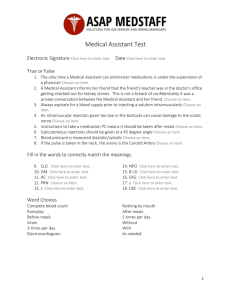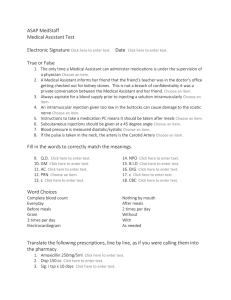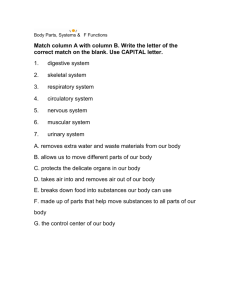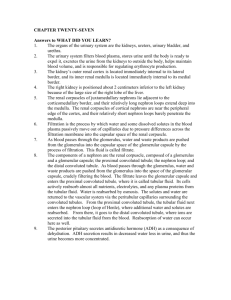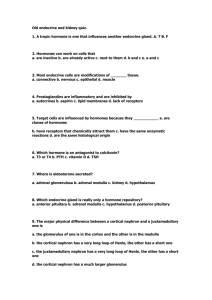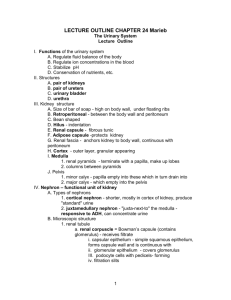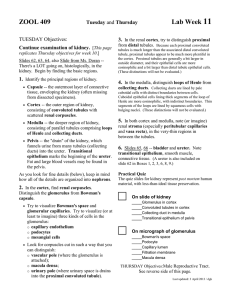Study Guide Chapter 25 Urinary Bio 4 Hoffman
advertisement
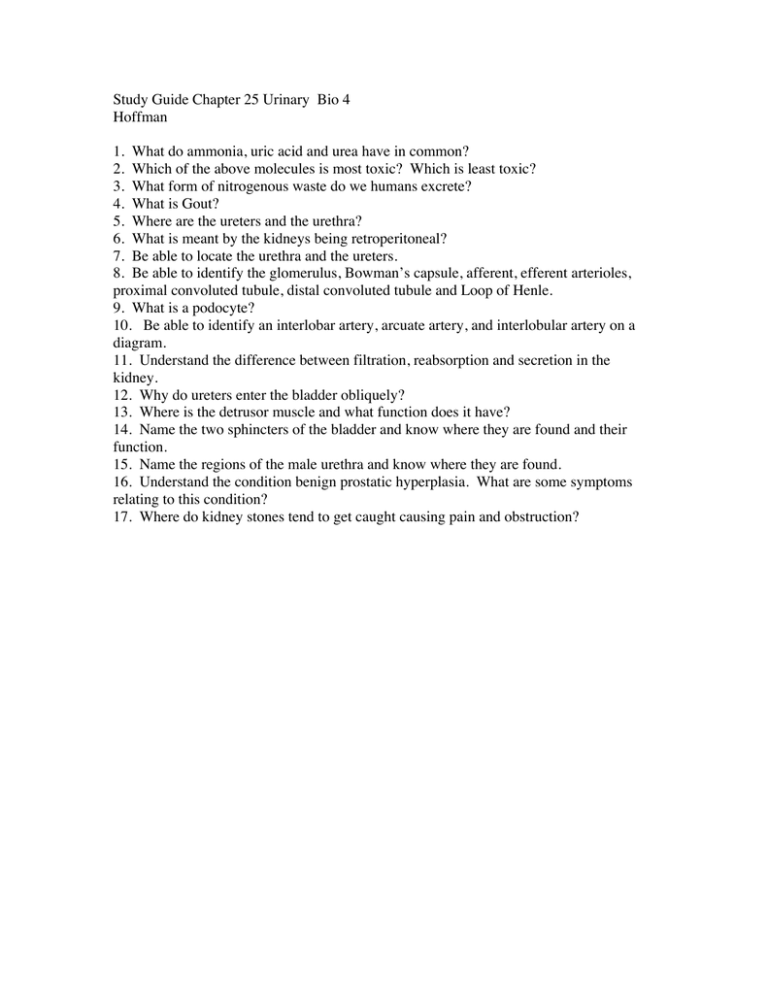
Study Guide Chapter 25 Urinary Bio 4 Hoffman 1. What do ammonia, uric acid and urea have in common? 2. Which of the above molecules is most toxic? Which is least toxic? 3. What form of nitrogenous waste do we humans excrete? 4. What is Gout? 5. Where are the ureters and the urethra? 6. What is meant by the kidneys being retroperitoneal? 7. Be able to locate the urethra and the ureters. 8. Be able to identify the glomerulus, Bowman’s capsule, afferent, efferent arterioles, proximal convoluted tubule, distal convoluted tubule and Loop of Henle. 9. What is a podocyte? 10. Be able to identify an interlobar artery, arcuate artery, and interlobular artery on a diagram. 11. Understand the difference between filtration, reabsorption and secretion in the kidney. 12. Why do ureters enter the bladder obliquely? 13. Where is the detrusor muscle and what function does it have? 14. Name the two sphincters of the bladder and know where they are found and their function. 15. Name the regions of the male urethra and know where they are found. 16. Understand the condition benign prostatic hyperplasia. What are some symptoms relating to this condition? 17. Where do kidney stones tend to get caught causing pain and obstruction?
